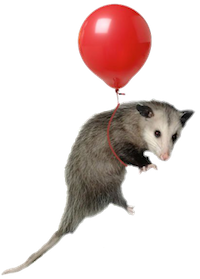Layouts #
Eleventy Layouts are special templates that can be used to wrap other content. To denote that a piece of content should be wrapped in a template, simply use the layout key in your front matter, like so:
---
layout: mylayout.njk
title: My Rad Markdown Blog Post
---
# {{ title }}This will look for a mylayout.njk Nunjucks file in your includes folder (_includes/mylayout.njk). Note that you can have a separate folder for Eleventy layouts if you’d prefer that to having them live in your includes folder.
You can use any template language in your layout—it doesn’t need to match the template language of the content. An ejs template can use a njk layout, for example.
layout: mylayout), Eleventy will cycle through all of the supported template formats (mylayout.*) to look for a matching layout file.Next, we need to create a mylayout.njk file. It can contain any type of text, but here we’re using HTML:
---
title: My Rad Blog
---
<!doctype html>
<html lang="en">
<head>
<meta charset="utf-8">
<meta name="viewport" content="width=device-width, initial-scale=1.0">
<title>{{ title }}</title>
</head>
<body>
{{ content | safe }}
</body>
</html>Note that the layout template will populate the content data with the child template’s content. Also note that we don’t want to double-escape the output, so we’re using the provided Nunjuck’s safe filter here (see more language double-escaping syntax below).
All of this will output the following HTML content:
<!doctype html>
<html lang="en">
<head>
<meta charset="utf-8">
<meta name="viewport" content="width=device-width, initial-scale=1.0">
<title>My Rad Markdown Blog Post</title>
</head>
<body>
<h1>My Rad Markdown Blog Post</h1>
</body>
</html>
Front Matter Data in Layouts #
Take note that in Eleventy’s Data Cascade, front matter data in your template is merged with Layout front matter data! All data is merged ahead of time so that you can mix and match variables in your content and layout templates interchangeably.
Note that front matter data set in a content template takes priority over layout front matter! Chained layouts (described below) have similar merge behavior. The closer to the content, the higher priority the data.
Sources of Data #
The order of priority for sources of data is (from highest priority to lowest):
- Front Matter Data in a Template
- Front Matter Data in Layouts ⬅
- Template Data Files
- Directory Data Files (and ascending Parent Directories)
- Global Data Files
Layouts in a Subdirectory New in v0.2.7 #
Layouts can be a full path inside of the includes folder, like so:
---
layout: layouts/base.njk
---This will look for _includes/layouts/base.njk.
Layout Aliasing New in v0.2.8 #
Configuration API: use eleventyConfig.addLayoutAlias(from, to) to add layout aliases! Say you have a bunch of existing content using layout: post. If you don’t want to rewrite all of those values, just map post to a new file like this:
module.exports = function(eleventyConfig) {
eleventyConfig.addLayoutAlias('post', 'layouts/post.njk');
};Prevent double-escaping in layouts #
| Template Language | Unescaped Content (for layout content) | Comparison with an Escaped Output | Docs |
|---|---|---|---|
| Nunjucks | `{{ content | safe }}` | {{ value }} |
| EJS | <%- content %> | <%= value %> | Docs |
| Handlebars | {{{ content }}} (triple stash) | {{ value }} (double stash) | Docs |
| Mustache | {{{ content }}} (triple stash) | {{ value }} (double stash) | Docs |
| Liquid | is by default unescaped so you can use {{ content }} | `{{ value | escape}}` |
| HAML | ! #{ content } | = #{ content } | Docs |
| Pug | !{content} | #{value} | Docs |
Layout Chaining #
Your layouts can also use a layout! Add the same layout front matter data to your layout template file and it’ll chain. You do not have to use the same template engine across layouts and content! You can mix and match.
To chain a layout, let’s look at an example:
---
layout: mainlayout.njk
title: My Rad Blog
---
# My Rad Markdown Blog PostWe want to add a main element around our post’s content because we like accessibility. Here’s what mainlayout.njk would look like:
---
layout: mylayout.njk
myOtherData: hello
---
<main>
{{ content | safe }}
</main>This layout would then be itself wrapped in the same mylayout.njk we used in our previous example:
<!doctype html>
<html lang="en">
<head>
<meta charset="utf-8">
<meta name="viewport" content="width=device-width, initial-scale=1.0">
<title>{{title}}</title>
</head>
<body>
{{ content | safe }}
</body>
</html>
Used together, this would output:
<!doctype html>
<html lang="en">
<head>
<meta charset="utf-8">
<meta name="viewport" content="width=device-width, initial-scale=1.0">
<title>My Rad Blog</title>
</head>
<body>
<main>
<h1>My Rad Markdown Blog Post<h1>
</main>
</body>
</html>
Addendum about existing Templating features #
It is worth noting that existing template reuse mechanisms built into different templating languages are still available to you. For instance, Nunjucks calls it Template Inheritance and exposes with {% extends %}. Eleventy’s layout system exists a layer above this and exposes a nice multi-template-language mechanism to configure layouts in your content’s front matter and share data between them.

